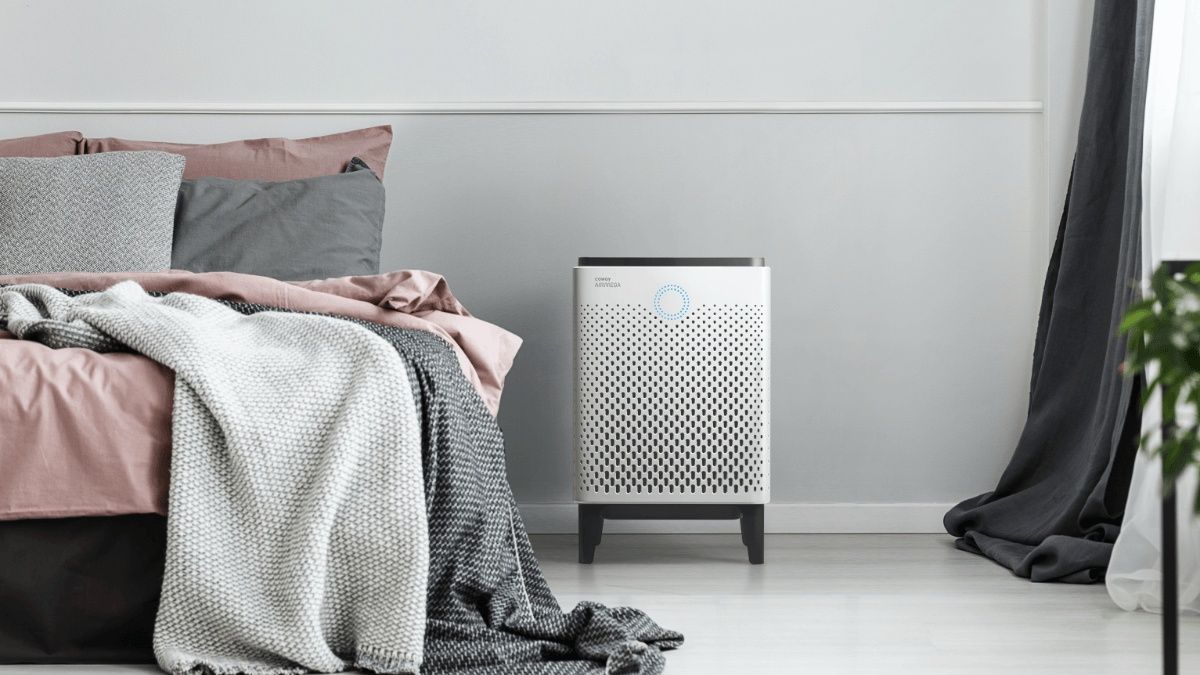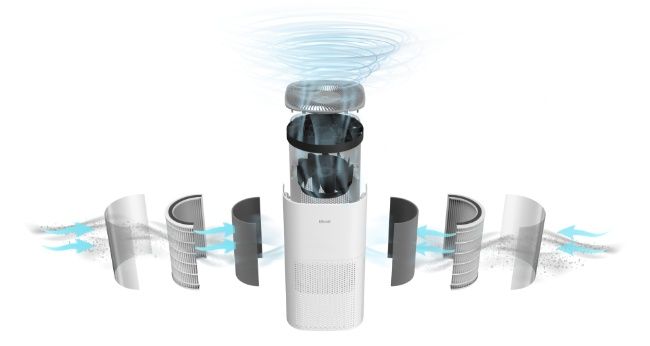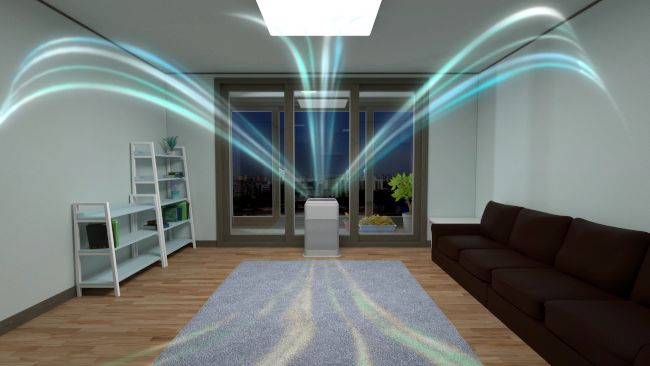Quick Links
Air purifiers are gaining popularity over concerns about indoor air quality. The best air purifiers claim to get rid of harmful pollutants and allergens. But can they actually do that? If so, then how? We answer all your questions.
What Is an Air Purifier?
It's common knowledge that outside air gets polluted by emissions, construction dust, and more. But many people don't realize that indoor air is also susceptible to contamination by several things, including household cleaners, mold that grows due to excess moisture, building materials, and cigarette smoke. This is where an air purifier comes into play.
It's an electric appliance that removes pollutants and other fine particles from the surrounding air. By doing so, it improves the overall air quality indoors.
Most consumer-grade air purifiers are portable and are placed in individual rooms to clean their air.
Types of Air Purifiers
Over the years, several types of air purifiers have debuted on the market, such as HEPA purifiers, ionizers, ozone generators, UV purifiers, and adsorbents. But high-efficiency particulate air (HEPA) purifiers have emerged as the most popular and recommended option for home use. HEPA air purifiers can also sometimes incorporate features from other types of purifiers to improve their performance. For example, some HEPA purifiers include adsorbents like activated carbon, ionizers, or UV filters.
Key Components of an Air Purifier
A HEPA air purifier is a simple machine. It has three main parts: an enclosure, a fan, and filter(s).
Enclosures are typically made of plastic and have perforations or grills to allow the air into and out of the purifier unit. Different manufacturers use different shapes for enclosures. But most commonly, you will find air purifiers with cylindrical or boxy housings.
A fan is another critical component of any air purifier. It helps the purifier suck in the polluted air and push out the filtered air. Air purifiers have different fan speeds to control how quickly you want the surrounding air to get filtered. But the faster you run the fan, the more noise it creates.
Lastly, filters are the most important part of an air purifier. Some filters can remove particles, whereas others are better at filtering gases. For example, HEPA filters used in HEPA purifiers are pleated air filters made of fiberglass or polypropylene that can theoretically remove almost all particles of 0.3 microns size or more. To give you some context, human hair is 17-181 microns thick. HEPA filters are great at removing dust, pollen, mold spores, mildew, pet dander, dust mites, soot, and many airborne pathogens. They are also helpful in filtering cigarette and wildfire smoke, but they can't remove odor.
On the other hand, an activated carbon filter contains small blocks of carbon that are treated to be highly porous. As a result, it can capture odors and gases like volatile organic compounds (VOCs). VOCs include harmful carcinogens like formaldehyde and benzene.
Apart from HEPA and activated carbons filters, some air purifiers also include a pre-filter. It catches larger particles like hair, dust, and dirt, which would otherwise clog the HEPA filter. Most pre-filters can easily be cleaned using a vacuum.
Some air purifiers also include ultraviolet (UV) filters. These filters use UV light to destroy mold spores and other airborne contaminants, including some pathogens. But given the extended UV light exposure required to kill contaminants, their effectiveness remains questionable as the air may pass too quickly through the purifier.
Remember, most filters in an air purifier need to be replaced after a certain period, typically three to six months, for effective operation.
How Does a HEPA Purifier Work?
HEPA purifiers filter the surrounding air by drawing it in using the built-in fan. This air passes through the various filters present in the machine before being thrown back out into the room. This is a continuous process, so the air is continuously being sucked in, filtered, and pumped out. Eventually, most of the air cycles through the air purifier, and the air quality improves dramatically.
But how quickly most air in a room gets filtered is different for each air purifier. So, to give you an idea of how long a particular air purifier will take to clean the air in your room, the Association of Home Appliance Manufacturers (AAHM) uses a metric called CADR, or Clean Air Delivery Rate.
How CADR Is Measured
CADR reflects the volume of filtered air in cubic feet per minute (CFM) that an air purifier delivers. There are different CADR scores for tobacco smoke, pollen, and dust.
It's tested at the highest fan speed and with new filters. So, if you are running the air purifier fan at a medium level or it has been some time since you replaced the filters, the resulting CADR will be lower than what the manufacturer quoted you when you bought the air purifier. Still, it's an excellent way to compare air purifiers when shopping and can help you decide which air purifier is best suited for your room size.
How to Pick a Suitable Air Purifier for Any Room Size
AAHM recommends that the CADR of an air purifier should typically be at least two-thirds of the room's area. But if you live in a region with frequent wildfires, the smoke CADR equal to the room's square feet area is better.
Although it sounds complicated to calculate, it's actually pretty straightforward. To get your room area, multiply the length and width in feet. So if you have a room 12 feet in length and 10 feet in width, the area will be 120 square feet. For this room, the CADR of an ideal air purifier would be at least 80 for each of the values unless your air purifier also has to deal with wildfire smoke. In this case, you would use an air purifier with at least 120 smoke CADR.
It's important to remember that AAHM recommendations assume a ceiling height of eight feet. But if your room's ceiling is over eight feet high, it's a good idea to go for a higher CADR than the recommendation, as the purifier will have to clean more air.
Where Should You Put the Air Purifier?
Once you have purchased an air purifier, you also have to decide on its placement. The ideal placement for an air purifier is typically in the middle of the room. But that's rarely feasible. So the next best place would be near a window or doorway because the higher air movement in these two locations will help distribute clean air across the room. Just remember to keep the purifier at least 18 inches away from a wall or a piece of furniture to avoid blocking the airflow.
What About Furnace and HVAC System Filters?
Furnace or HVAC system filters can also remove particles and improve air quality. But they only work when the furnace or the HVAC system is running. You will increase electricity costs if you run them for more extended periods. But if you still want to use them to filter the air in your home, it's a good idea to pick a high-efficiency filter with a Minimum Efficiency Reporting Value (MERV) 13 rating or higher if your system will accept. MERV represents a filter's ability to capture particles between 0.3 and 10 microns.
Complementing Ventilation and Pollutant Source Control
The best ways to improve your indoor air quality are ventilation and reducing or removing the sources of pollutants. But air purifiers can effectively complement ventilation and pollutant source control. So, when shopping for an air purifier, look for the ones featuring HEPA filters and make sure their CADR is sufficient for your room. As a starting point, you can also check out our recommendations for the best air purifiers.



